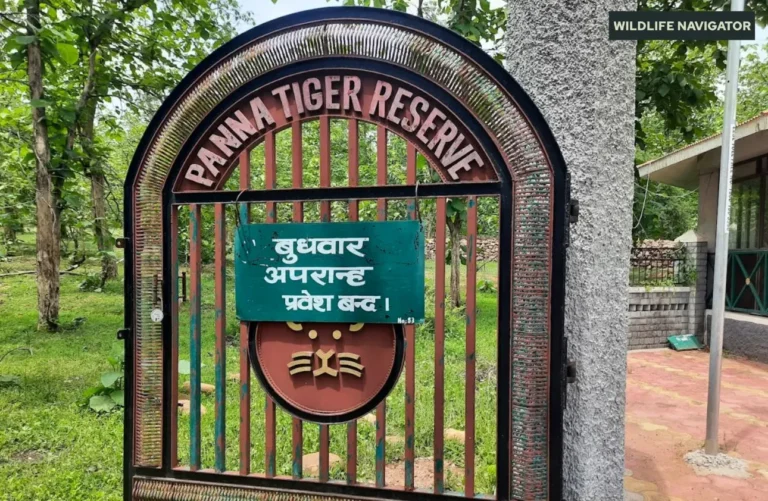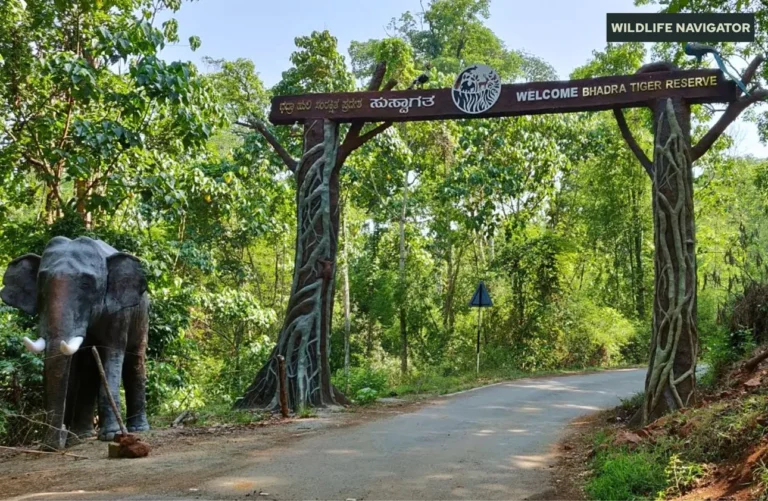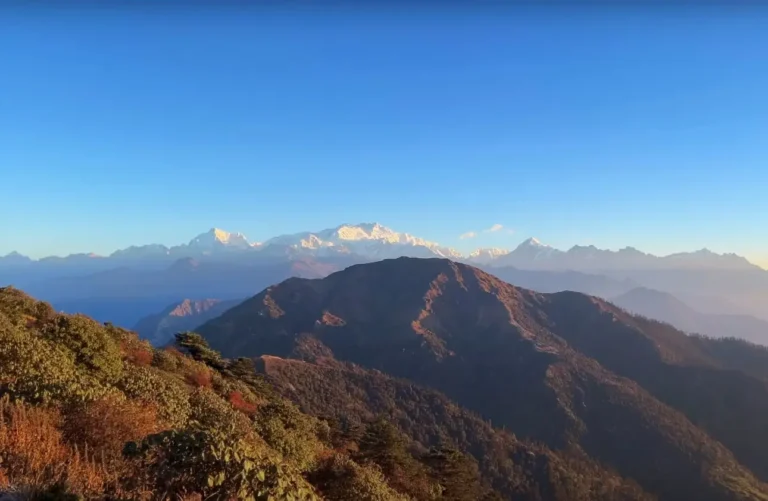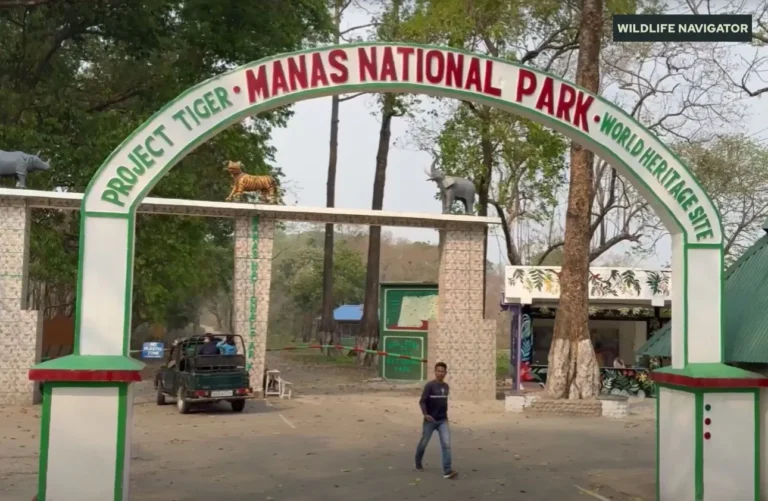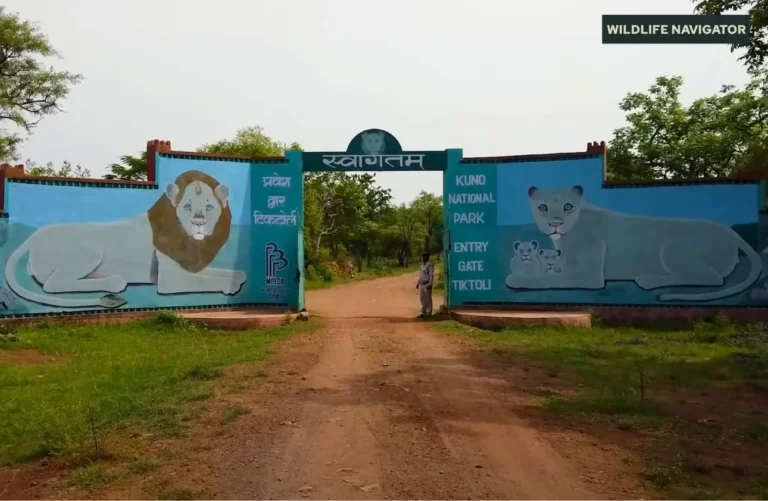Ramgarh Vishdhari Tiger Reserve: A Wildlife Paradise in Rajasthan
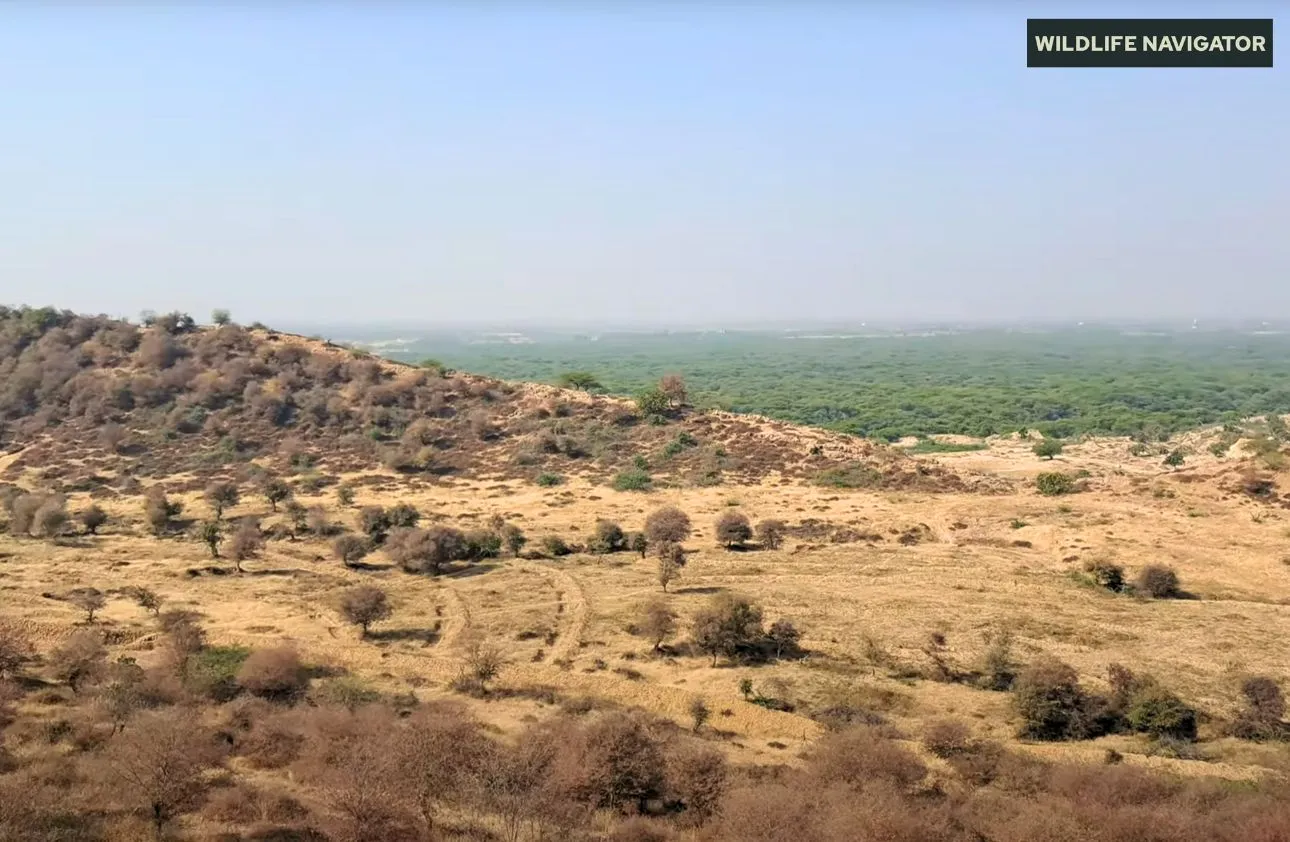
Ramgarh Vishdhari Tiger Reserve is one of India’s newest tiger reserves, located in Rajasthan. It plays a crucial role in conserving the majestic Bengal tiger while protecting a variety of flora and fauna unique to this region. As part of India’s ambitious Project Tiger initiative, the reserve joins the growing network of tiger reserves in India that together form the backbone of the country’s wildlife conservation efforts.
The reserve also highlights the growing importance of eco-tourism in India, offering visitors a chance to experience the wilderness while contributing to conservation initiatives. With its rich biodiversity, serene landscapes, and well-managed wildlife corridors, Ramgarh Vishdhari is fast emerging as a significant destination for wildlife enthusiasts, photographers, and researchers alike.
Key Highlights:
- A newly declared tiger reserve under India’s Project Tiger.
- Important for tiger conservation and biodiversity protection.
- Offers eco-tourism opportunities in a pristine environment.
- Supports research and community involvement in conservation.
1. History and Establishment
Ramgarh Vishdhari Tiger Reserve has a fascinating history that reflects both the region’s natural richness and the growing awareness of wildlife conservation in India. Before its designation as a tiger reserve, the area was part of a dense forest landscape in Rajasthan, supporting a wide variety of wildlife, including tigers, leopards, and numerous herbivore species. Local communities have traditionally lived in and around these forests, depending on them for resources while coexisting with wildlife.
The official declaration of Ramgarh Vishdhari as a tiger reserve came as part of India’s ongoing Project Tiger initiative, which aims to protect tiger habitats and increase the population of these endangered big cats. This move not only ensures legal protection for the forests and its wildlife but also integrates the area into a network of corridors connecting other tiger habitats, crucial for genetic diversity and safe tiger movement.
Key Historical Points:
- Originally a dense forest landscape supporting diverse wildlife.
- Home to local communities living sustainably with nature.
- Declared a tiger reserve under Project Tiger to strengthen tiger conservation.
- Integrated into a wider network of tiger habitats in Rajasthan for ecological balance.
2.1 Geography and Landscape
Ramgarh Vishdhari Tiger Reserve is located in the Bundi district of Rajasthan, covering an area of approximately 252 square kilometres. Nestled amidst the rugged terrains of the Vindhya hills, the reserve features a mix of dry deciduous forests, scrublands, and open grasslands that provide ideal habitats for tigers and other wildlife.
The landscape is characterised by undulating hills, rocky outcrops, and small seasonal rivers, which not only add to its scenic beauty but also support the diverse flora and fauna of the region. These natural water sources are crucial for wildlife, especially during the dry summer months, and contribute to the ecological balance of the reserve.
Geographical Highlights:
- Location: Bundi district, Rajasthan.
- Area Covered: ~252 sq km.
- Terrain: A Combination of hills, forests, scrublands, and grasslands.
- Water Sources: Seasonal rivers, streams, and natural waterholes supporting wildlife.
- Accessibility: Close to towns like Bundi, which can serve as a base for visitors.
The unique combination of forests, grasslands, and rocky terrains makes Ramgarh Vishdhari an ideal sanctuary not only for tigers but also for leopards, jackals, and a variety of herbivores and bird species.
3. Flora and Fauna
Ramgarh Vishdhari Tiger Reserve is a biodiversity hotspot, home to a variety of plant and animal species that thrive in its dry deciduous forests, scrublands, and grasslands. The reserve’s ecological richness makes it an important site for conservation and wildlife research.
3.1 Flora
The forests of Ramgarh Vishdhari are dominated by dry deciduous trees, shrubs, and grasses, which provide food and shelter for herbivores and smaller wildlife. Key vegetation includes:
- Teak (Tectona grandis) and Sal trees – provide dense forest cover.
- Bamboo groves – support small mammals and birds.
- Grasses and shrubs – essential for herbivores like deer and wild boar.
- Medicinal plants – used by local communities and support ecosystem balance.
3.2 Fauna
The reserve is primarily known for its tiger population, but it hosts a wide array of other species:
Carnivores:
- Bengal tiger – the flagship species of the reserve.
- Leopard – often spotted in forested and hilly areas.
- Jackals and foxes – common, smaller carnivores.
Herbivores:
- Chital (spotted deer) and sambar deer – primary prey for tigers.
- Wild boar and nilgai – grazing animals supporting the food chain.
Birds and Reptiles:
- Over 150 bird species, including peafowl, parakeets, and raptors.
- Snakes, lizards, and tortoises – maintaining ecological balance.
Key Biodiversity Highlights:
- Rich mix of forest, grassland, and scrubland species.
- Critical habitat for endangered tigers.
- Supports predator-prey balance and ecological stability.
The combination of diverse flora and fauna makes Ramgarh Vishdhari an ideal location for wildlife enthusiasts, photographers, and researchers aiming to observe India’s wildlife in a natural setting.
4. Best Time to Visit
The best time to explore Ramgarh Vishdhari Tiger Reserve largely depends on wildlife activity, weather conditions, and your comfort with seasonal climates. Rajasthan experiences extreme temperatures, so planning your visit carefully is essential.
4.1 Ideal Months:
- October to March – This is the most favourable period for visiting the reserve. The weather is cool and pleasant, making safaris and treks enjoyable. Tiger and other wildlife sightings are more frequent as animals gather near water sources.
- April to June – Summers in Rajasthan can be extremely hot, with temperatures often exceeding 40°C. Wildlife activity reduces during the day, so morning and late afternoon safaris are recommended.
- July to September – The monsoon season transforms the forests into lush greenery, which is visually stunning. However, heavy rains may restrict safari access and make some areas difficult to navigate.
4.2 Wildlife Spotting Tips by Season:
- Winter: Early mornings are ideal for spotting tigers and deer near waterholes. Birdwatching is excellent during this season.
- Summer: Look for animals in shaded areas and near remaining water sources. Safaris are best in early morning or late evening.
- Monsoon: The forest comes alive with migratory birds and vibrant flora. Tiger sightings are rare, but the scenery is spectacular.
Key Takeaways:
- Peak Wildlife Viewing: October to March.
- Avoid Extreme Heat: April to June unless prepared for high temperatures.
- For Greenery Lovers: Monsoon months (July to September) are ideal, though sightings may be limited.
5. Safari and Wildlife Tours
Exploring Ramgarh Vishdhari Tiger Reserve is an unforgettable experience for wildlife enthusiasts. Safaris and guided tours allow visitors to observe tigers, leopards, and other wildlife in their natural habitat while learning about conservation efforts.
5.1 Types of Safaris:
- Jeep Safari –
- The most popular way to explore the reserve.
- Allows access to deeper forest areas.
- Ideal for spotting tigers, leopards, deer, and birds.
- Walking Safari –
- Conducted in small groups with trained forest guides.
- Offers an immersive experience of the forest’s flora and fauna.
- Best suited for early morning hours.
- Birdwatching Tours –
- Guided tours focused on spotting resident and migratory bird species.
- Binoculars and cameras are recommended.
5.2 Timings:
- Safaris usually start early in the morning (6:00–9:00 AM) and late afternoon (3:00–6:00 PM).
- Midday is avoided as wildlife activity decreases and temperatures rise.
5.3 Entry Fees (Approximate):
- Jeep Safari: ₹500–₹800 per person
- Walking Safari: ₹300–₹500 per person
- Guide Fees: ₹200–₹400 per group
5.4 Tips for Wildlife Spotting:
- Stay silent and avoid sudden movements.
- Use binoculars and zoom lenses for photography.
- Wear earthy-colored clothing to blend with the environment.
- Follow the guide’s instructions for safety.
5.5 Do’s and Don’ts:
- Do: Carry water, snacks, and sunscreen. Respect wildlife and forest rules.
- Don’t: Litter, feed animals, or make loud noises.
Safaris at Ramgarh Vishdhari offer a perfect blend of adventure, learning, and conservation awareness, making it a must-visit for wildlife lovers.
6. Accommodation Options
Visitors to Ramgarh Vishdhari Tiger Reserve have multiple options for staying close to the wilderness, ranging from forest lodges to nearby hotels and eco-resorts. Staying within or near the reserve allows for easy access to early morning and late afternoon safaris.
6.1 On-Site Forest Lodges:
- Forest Rest Houses: Operated by the forest department, these lodges offer basic but comfortable amenities.
- Facilities: Clean rooms, attached bathrooms, and guided safari booking assistance.
- Approximate Pricing: ₹1,000–₹2,500 per night depending on the room type.
6.2 Nearby Hotels and Guesthouses:
- Towns like Bundi offer multiple hotels, guesthouses, and homestays.
- Facilities: Modern amenities, restaurants, and easy connectivity to the reserve.
- Approximate Pricing: ₹1,500–₹4,000 per night.
6.3 Eco-Resorts:
- Some eco-friendly resorts near the reserve focus on sustainable tourism and nature experiences.
- Offer guided treks, nature walks, and wildlife education programs.
- Approximate Pricing: ₹3,000–₹6,000 per night.
Tips for Booking:
- Book in advance, especially during peak season (October to March).
- Confirm safari availability with accommodation providers.
- Choose eco-resorts for a more immersive and sustainable wildlife experience.
Staying near Ramgarh Vishdhari not only provides convenience but also supports local conservation and community initiatives.
7. How to Reach Ramgarh Vishdhari Tiger Reserve
Ramgarh Vishdhari Tiger Reserve is accessible by road, rail, and air, making it relatively easy for travellers to plan a visit from major cities in Rajasthan and neighbouring states.
By Air:
- The nearest airport is Jaipur International Airport, approximately 210 km from the reserve.
- From Jaipur, visitors can hire a taxi or use bus services to reach Bundi and then the reserve.
By Train:
- The nearest railway station is Bundi Railway Station, around 30 km from the reserve.
- Bundi is well-connected to major cities like Jaipur, Kota, and New Delhi.
- From the station, local taxis or private vehicles can take visitors to the reserve.
By Road:
- Ramgarh Vishdhari is well-connected via road from Bundi (30 km), Kota (100 km), and Jaipur (210 km).
- Buses, taxis, and private vehicles are available for a comfortable journey.
- Roads leading to the reserve pass through scenic rural landscapes and small towns.
Local Transport Tips:
- Hiring a taxi or self-driving is recommended for flexibility, especially if planning multiple safaris.
- Public transport is limited, so prior arrangements with hotels or forest lodges are advisable.
Visiting Ramgarh Vishdhari is relatively straightforward, and planning your route in advance ensures a hassle-free wildlife adventure.
8. Conservation Efforts at Ramgarh Vishdhari Tiger Reserve
Ramgarh Vishdhari Tiger Reserve plays a crucial role in protecting tigers and preserving the ecological balance of the region. Conservation here focuses on habitat protection, wildlife monitoring, and involving local communities in sustainable practices.
8.1 Tiger Protection:
- The reserve is part of Project Tiger, India’s flagship program for tiger conservation.
- Anti-poaching measures, patrolling, and monitoring help safeguard tigers and their prey.
- Camera traps and GPS tracking are used to study tiger movements and population trends.
8.2 Community Involvement:
- Local communities are encouraged to participate in eco-tourism, forest protection, and wildlife education programs.
- Alternative livelihood options reduce dependence on forest resources, minimising human-wildlife conflict.
- Awareness campaigns teach the importance of conserving forests and protecting wildlife.
8.3 Research and Monitoring:
- Biologists and forest staff conduct regular surveys of flora and fauna.
- Research includes studying tiger prey density, habitat quality, and biodiversity trends.
- Data collected helps improve management strategies and wildlife conservation policies.
Key Takeaways:
- Ramgarh Vishdhari contributes significantly to tiger conservation in Rajasthan.
- Community engagement ensures sustainable protection of forests and wildlife.
- Continuous research helps adapt strategies for long-term ecological balance.
The reserve’s conservation initiatives ensure that future generations can experience the beauty and biodiversity of this vital tiger habitat.
9. Nearby Attractions
While Ramgarh Vishdhari Tiger Reserve itself is a major draw for wildlife enthusiasts, the surrounding region of Rajasthan offers several attractions that can enrich your trip. These nearby sites are perfect for history buffs, nature lovers, and culture seekers alike.
9.1 Historical and Cultural Sites:
- Bundi Fort: A majestic hilltop fort known for its beautiful architecture, murals, and panoramic views of the town.
- Taragarh Fort: One of the oldest forts in Bundi, offering insights into Rajasthan’s rich history.
- Chhatra Mahal: A lesser-known palace in Bundi with stunning architectural details and serene surroundings.
9.2 Natural Attractions:
- Jain Temple in Bundi: Carved intricately from stone, set amidst scenic surroundings.
- Ranthambore National Park (optional extension): Around 200 km away, a well-known tiger reserve ideal for wildlife enthusiasts exploring multiple reserves in Rajasthan.
- Bundi Stepwells (Baoris): Unique stepwells with historical significance and exquisite carvings, perfect for photography enthusiasts.
9.3 Tips for Visiting Nearby Sites:
- Allocate 1–2 days to explore Bundi town and its historical sites.
- Combine wildlife tours with cultural exploration for a holistic experience.
- Hire local guides to enrich your understanding of the history and heritage.
Exploring nearby attractions adds depth to your trip, allowing you to enjoy both the natural beauty and the rich cultural tapestry of Rajasthan.
